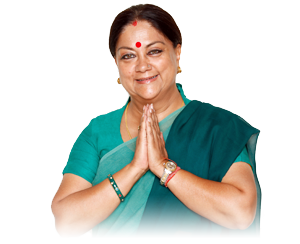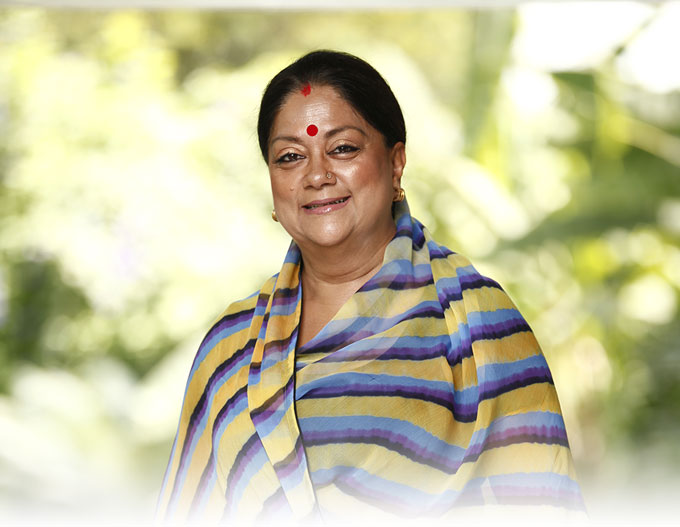A revolution in subsidies: A modern state is a welfare state, but it must target and deliver subsidies effectively
A modern state is a welfare state. But a modern state does not “spray and pray” with its subsidies. It must deliver them with grace, efficiency and effectiveness.
Currently ration shops in Rajasthan stock only three items (wheat, sugar and kerosene), are open only one week a month, treat citizens poorly, and have high subsidy leakage because we lack the online infrastructure to cross reference inventory, consumption and eligibility. Over the next year the state government will rebrand 5,000 of our 25,542 ration shops in a public private partnership as Annapurna Bhandars: They will stay open all month, sell more than 150 products at prices regulated by the government, start home delivery and join an online platform.
In parallel, all families with state government issued Bhamashah cards will have the option to choose between direct cash credit of subsidies to bank accounts or getting non-cash subsidised goods that trigger an SMS to their cellphone when their eligibility amount is issued by any ration shop. During pilots of this subsidy choice in Ajmer, citizens opted for non-cash versus cash subsidies in the ratio of 65:35. But this may change over time.
India’s subsidy debate has deep historical roots; some of the most heated debates between the 299 members of the constituent assembly that wrote India’s remarkable Constitution were around the distinction between fundamental rights (whose aim was political democracy) and directive principles (whose aim was social and economic democracy). There was great disappointment amongst some members when directive principles were made non-justiciable (unenforceable by courts).
I believe these were essentially conflicts of head and heart because everything that our citizens needed was not possible immediately. As Babasaheb Ambedkar said during his speech introducing the draft Constitution in 1948,
“The criticism that directive principles are pious declarations with no binding force is superfluous. Whoever is in power cannot ignore them even though he may not have to answer in a court of law for breach. But he will certainly have to answer to the electorate.”
Babasaheb was right; electoral politics since our first election in 1952 have shown that no political party can ignore the social and economic objectives of the directive principles. The amount of government spending is less important than how the money is spent; spending that doesn’t reach the needy is not only wasteful but represents stealing from future generations.
Much of the Rs 80,000 crore outstanding debt of the Rajasthan State Electricity Board represents wasteful subsidies that could have been spent on roads, education or skills. A former prime minister once said that only 15% of government expenditure reaches the poor; clearly his realisation was not shared by the last central government which bafflingly cancelled the implementation of Aadhaar verification for gas cylinder subsidy just before the last Lok Sabha election.
Thankfully the linking of gas cylinder subsidies to Aadhaar by the new government will save Rs 10,000 crore annually. Economic theory is divided over the relative efficacy of cash versus non-cash subsidies but experience from Mexico, Brazil and the US suggests that cash transfers have smaller leakages and women are more responsible custodians of subsidy spending than men. However the economics profession changes its mind often and policy makers should be guided by citizen choice, while simultaneously improving cash and non-cash subsidy delivery using a powerful new tool for the modern welfare state: biometric identification.
The enemy of subsidy spending is leakage to people who do not need it. The Rajasthan government’s consolidated and de-duplicated Bhamashah database will issue a card to every family that will be linked to a bank account in the name of the lady of the house. Bhamashah’s Aadhaar authenticated database makes it an effective platform for financial inclusion, health insurance, ration shops, education scholarships, MGNREGA payments, and much else – because all families will receive an SMS for all cash or non-cash transactions linked to their card.
The state government has enrolled 88 lakh of Rajasthan’s 135 lakh families and will cover everybody in two years. Over time physical cards will be replaced by phones consistent with the Centre’s audacious JAM trinity (Jan Dhan Yojana, Aadhaar and Mobile Phone).
It’s safe to predict that over the next few decades government expenditure in India will rise substantially from the current 16% of GDP; comparable numbers are 57% for Denmark, 40% for the US and 25% for Brazil. However, a populous country like India must balance targeted government subsidies with alternate social justice solutions like infrastructure, education, skills and jobs.
The wisdom of balance in governance is hardly new; the magnificent ruins at Hampi of the Vijaynagara Empire have a horizontal band of three animal sculptures at the bottom of every building; tigers (for courage), horses (for speed) and elephants (for stability). This grouping has an important message for state governments that often choose the status quo over boldness, innovation and experimentation.
The Centre has created new space for state governments to complement India’s progress in fundamental rights since 1947 with better outcomes on the Constitution’s directive principles. Delivering subsidies more efficiently and effectively is surely a great place to start.

(The writer is Chief Minister of Rajasthan)










